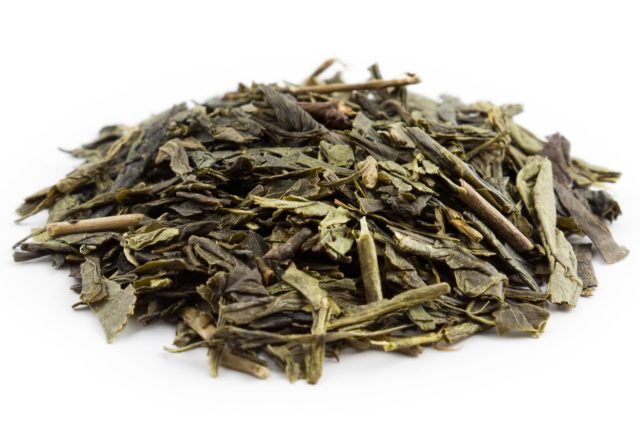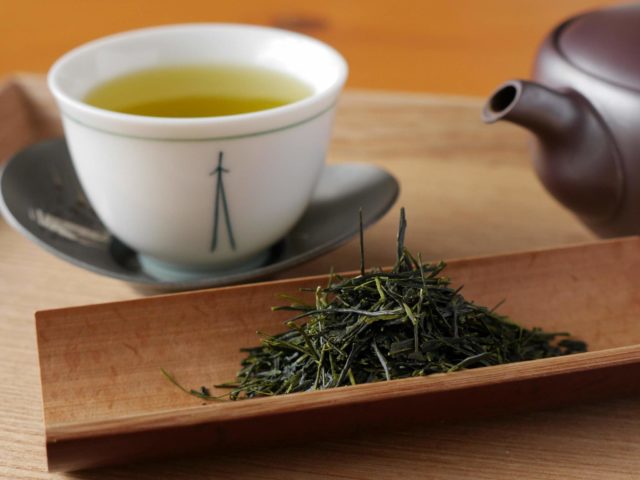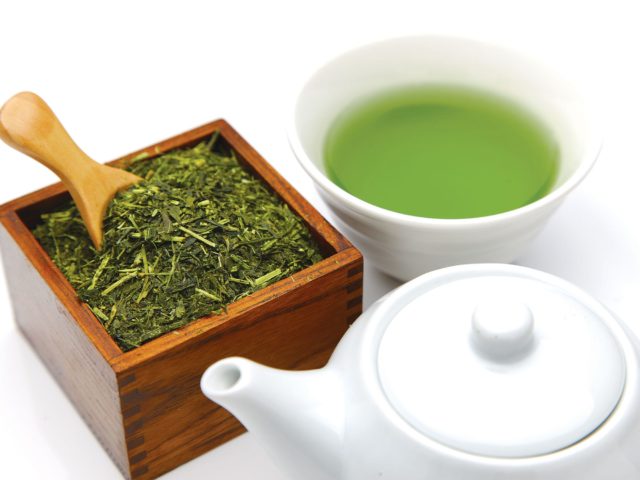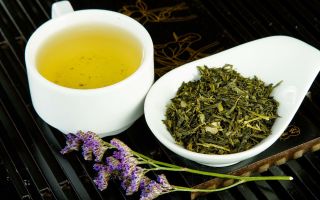Content
- 1 What is Sencha tea and the history of the drink
- 2 Where is produced
- 3 Sencha tea composition
- 4 Aroma and taste
- 5 How Japanese Sencha differs from Chinese
- 6 Medicinal properties and uses of sencha tea
- 7 Recommendations and rules for brewing tea
- 8 Contraindications and possible harm
- 9 How to choose and store correctly
- 10 Conclusion
The benefits and harms of green sencha tea have been controversial lately. It takes its origins from the land of the Rising Sun. Today the drink has become widespread throughout the world. It is appreciated for its unique taste and the abundance of nutrients in its composition.
What is Sencha tea and the history of the drink
Sencha is one of the most popular varieties of Japanese green tea. The tea has a tart taste with a pleasant herbal-nutty aftertaste. The leaves are rolled into long green tubes. The Japanese called them spider paws. There are two varieties of green sencha tea on the market. One is considered elite, while the other is more affordable. They differ both in taste and in their beneficial properties.
In the 13th century, green sencha was first cultivated by Buddhist monks. This took place in a small area called Obuku. It was there that the ideal conditions for growing tea were found. The area is famous for its fertile soil and favorable weather conditions. Their main secret is the absence of frost and the presence of fogs. For many years, the sencha tea collected in Obuku was donated to the Japanese rulers.

In 1738, the technology for processing tea leaves was modified. This was facilitated by the tea merchant Soen Nagatani. The method of steaming tea has been mainly changed. In memory of the merchant, a shrine was erected at the top of the highest hill in Ujitawara.
Later, the process of drinking tea in Japan became a kind of cult. There are many interesting traditions associated with brewing and serving the drink. Today, sencha is served in public places and is drunk at home. Green tea is most often consumed cold in hot weather, and hot in winter.
Where is produced
Today the Kagoshima and Shizuoka plantations are considered the most favorable places for growing tea. It is also produced in Saga, Aichi, Kyoto, Mie and Fukuoka prefectures. The collection of leaves for making tea is carried out 2 times a year - at the end of May and in July. Tea harvested for the first time is considered to be of better quality. That is why its price is higher than that of the raw materials obtained in July.
To improve the composition and taste of sencha tea, a special growing technology is used. It involves darkening the bushes from the sun's rays. Due to this, more amino acids and less tannin accumulate in the leaves. The harvested leaves are steamed using seaweed. This gives the tea its characteristic nautical flavor.The taste of the drink depends on the duration of steaming the tea leaves.
Sencha tea composition
The benefits and harms of green sencha tea are due to its unique chemical composition. When used correctly, the drink reveals only positive qualities. It contains a huge amount of vitamins, minerals and amino acids. That is why regular consumption of green tea strengthens the immune system and prevents a number of diseases.
The most valuable ingredients in green tea are:
- vitamin C;
- vitamin A;
- antioxidants;
- tocopherol;
- iodine;
- potassium;
- catechins;
- phosphorus;
- saponins;
- folic acid;
- calcium.
Due to the high content of antioxidants, sencha has an anti-tumor effect. It is able to remove toxic substances from the body and inhibit the growth of malignant tumors. Vitamin C in its composition helps to strengthen the immune system. Iodine, in turn, helps with thyroid diseases. The minerals in the fermented drink strengthen the teeth and bones.
Aroma and taste
The main distinguishing feature of sencha is its taste. Tea has a pronounced aroma and tart taste. The strength is determined by the variety. Some of them have a sweetish aftertaste.

How Japanese Sencha differs from Chinese
Not only Japanese, but also the Chinese sencha drink is on sale. It differs in the way it is made. Processing does not take place under the influence of steam, but through the usual roasting of the leaves. The finished tea has an oily herbal taste with floral notes. Chinese sencha goes well with dried berries and aromatic herbs. So its taste is revealed much more interesting.
Medicinal properties and uses of sencha tea
Sencha is famous for a huge number of positive qualities. It starts metabolic processes and stabilizes blood sugar levels. That is why the drink is especially useful for those who suffer from heart disease and diabetes. It is also commonly consumed by nutritionists.
The beneficial properties of sencha tea are as follows:
- elimination of harmful cholesterol from the body;
- anti-aging effect;
- normalization of blood pressure;
- restoration of water-lipid balance;
- reducing the risk of developing malignant tumors;
- strengthening immunity;
- replenishment of energy reserves;
- stimulation of cognitive activity;
- antiviral effect;
- prevention of atherosclerosis;
- help in losing weight.
Regular consumption of sencha allows you to maintain metabolic processes at the desired level. The drink can be drunk for breakfast instead of coffee. It perfectly saturates the body with energy and reduces the likelihood of developing dangerous diseases. Despite its invigorating effect, sencha is not addictive as it contains less caffeine than coffee.
Green tea also has a beneficial effect on the condition of the oral mucosa. It neutralizes unpleasant odors and prevents tooth decay. Among other things, fermented tea has a positive effect on performance. Therefore, it is often advised to take it with a breakdown and a decrease in concentration.
Invigorating effect
Sencha green tea contains a small amount of caffeine. Due to it, it is possible to increase concentration and productivity. A person's well-being is also improved by the vitamin component of the drink. Due to the pronounced invigorating effect, it is undesirable to drink the drink in the afternoon.

Strengthening immunity
Boosting immunity through the use of green tea is achieved due to its antioxidant properties. They are due to the rich content of ascorbic acid in the composition. It speeds up the production of white blood cells and speeds up the regeneration processes. Due to its ability to strengthen the immune system, tea is recommended to be taken in autumn and winter for preventive purposes.
Mental activation
The antioxidants that sencha contains stimulate the activity of neuronal cells. This prevents oxidative processes that contribute to the deposition of plaque in the vascular cavity. As a result of long-term consumption, Japanese tea improves blood circulation, which allows the brain cells to receive more oxygen.
Lower cholesterol levels
A decrease in the level of harmful cholesterol in the blood occurs due to the normalization of metabolism. This helps prevent the development of atherosclerosis. It is accompanied by the appearance of cholesterol plaques in the vessels. This pathology is considered potentially life-threatening. Therefore, sencha green tea is especially beneficial for the elderly and people with bad habits. They are at high risk.
Preventing Cancer
Sencha green tea is also useful in preventing the growth of malignant cells. Antioxidants in its composition protect the body from free radicals and inhibit the process of cell mutation. Experts say that tea is especially beneficial for the prevention of prostate cancer.
Weight loss
Sencha green tea has a diuretic effect on the body. Thanks to this, it helps to cope with puffiness. In the process of losing weight, it promotes weight loss. Along with this, tea activates metabolic processes, starting fat burning. To achieve the desired result, it is recommended to take it 2-3 times a day.
Lower blood pressure
Sencha tea is recommended for people with atherosclerosis and stroke. The green drink has a positive effect on blood circulation and vascular health. Due to this, it is able to regulate blood pressure levels and improve human well-being.
Recommendations and rules for brewing tea
In addition to the description, properties and contraindications of sencha tea, you need to familiarize yourself with the rules for brewing it. A porcelain or ceramic teapot is used as a container. It is pre-scalded with boiling water. Tea is added at the rate of 1 tsp. for 1 st. water. The water temperature should not exceed 85 ° C.

A distinctive feature is the short duration of tea brewing. Already after 1-2 minutes of infusion, it can be poured into cups. Otherwise, the tea will become too bitter. Foam should form on its surface. Its absence indicates high water hardness or poor quality of the raw materials used.
Experts recommend serving green tea in small bowls. When brewed correctly, it has a pleasant green hue and a bright aroma. Tea will be an excellent decoration for a festive table.
Contraindications and possible harm
If you use Japanese sencha tea incorrectly, you can get not only benefits, but also harm. To prevent this from happening, it is enough to take into account the contraindications. These include:
- high blood pressure;
- allergic reaction;
- pregnancy and the period of breastfeeding.
It is equally important to keep track of the amount of tea you drink. The maximum daily intake is 700 ml. When consumed in excess, tea can cause tachycardia. This condition is accompanied by increased anxiety and nausea. The most common side effects of a green drink include urinary frequency. In some cases, there is an unmotivated surge of strength and an excited state.This is especially inappropriate in the evening, before going to bed. It is better not to consume tea during this time period. In case of individual intolerance, sencha provokes a skin rash.
How to choose and store correctly
When choosing a green drink, Japanese should be preferred over Chinese producers. It is also advisable to take into account the type of product. Tea leaves harvested in April have a healthier composition. If the tea is in transparent packaging, the integrity of the leaves should be assessed. They should be quite large, in the form of a tube. The presence of dust in the pack is unacceptable.
It is advisable to store green tea in a tin can with a lid. It is important to keep it away from moisture and direct sunlight. You can also leave the sencha tea in its original packaging, while ensuring its tightness. The most suitable storage space would be a kitchen cabinet.
Conclusion
The benefits and harms of green sencha tea primarily relate to human well-being. Do not forget that the principle of its effect on the body directly depends on compliance with the rules of preparation and reception. Drinking tea in moderation does not cause side effects.

